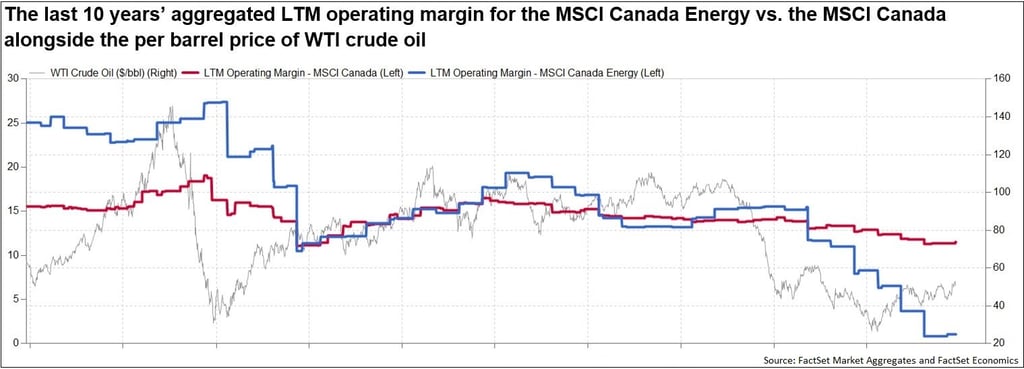After declines in 2012 and 2013, annual new investment in renewable energy globally has hit an all-time high, reaching $286 billion in 2015, the most recent period for which data is available according to the United Nations Environment Programme. The 22% increase in new investment from 2013 to 2015 is attributed mostly to developing countries, where investment grew from $98 billion to $156 billion.
While the specter of climate change is an obvious impetus for this acceleration in renewable energy investment, there are economic and geopolitical drivers as well, namely the decline in profitability of oil and gas production, the rise in economic feasibility of large scale clean energy generation, and a desire to exert global or regional influence in the arena of climate change and carbon emission reduction. Combined, these factors have accelerated clean energy investing to today's levels.
Factor One: Rising Cost of Oil Production
Developed countries, where new investment in clean energy production has actually been shrinking, are facing economic pressures to pick up the pace with the cost of extracting oil increasing and the price of oil down by 50% since August 2014.
For example, many untapped pockets of oil available to Norway, the world’s thirteenth largest producer, are far off shore out of the reach of existing rigs.
American drilling in the Gulf of Mexico is getting more expensive and relief is coming from a controversial source. Hydraulic fracturing, or fracking, has helped to reinvigorate the onshore oil and gas production industry in the United States, but there are potential health and environmental risks and heightened regulation that could slow development.
Up north, Canada’s oil sands deposits in Alberta are part of one of the largest oil reserves in the world, but it’s costly to extract and the resulting crude oil is of subpar quality.

These same pressures are further accelerating alternative energy research and production in the developing world.
Brazil faces similar issues as Norway with expensive deep water extraction compounded by corruption concerns at Petrobras, the country’s semi-public oil giant. Neighboring Venezuela, the largest OPEC producer outside of the Middle East and host to the largest oil reserves on the planet, is on the brink of an oil crisis due to a combination of anemic investment, crippling taxes, rampant inflation, and rising refining costs.
Nigeria, Africa’s largest oil producer, is faced with widespread corruption in the industry and high costs to develop its offshore production efforts, with four of the country’s 11 rigs shut down in the third quarter of 2016.

Factor Two: Decreasing Cost of Clean Energy Technology
While the cost of oil production is increasing, the cost of developing and manufacturing clean energy technologies has fallen dramatically, even from just five years ago. For example, the average cost of electricity generated from solar panels has tumbled 58% since 2010, with similar improvements expected over the next decade. Both onshore and offshore wind energy production costs have also fallen. Similar trends are apparent in the production costs of batteries, aided by massive research and development investments made by companies like Tesla. Further investment in the industry will only accelerate these declining production costs.
India, one of the fastest growing economies in the world, is one of the countries taking advantage of the falling costs of renewable energy production. The nation, which has seen a 55% increase in annual new clean energy investment from 2013 to 2015, has ambitious plan to address its power supply-demand gap (hundreds of millions of its citizens do not have ready access to power) with renewable energy.
Sunny North Africa is an ideal place for the production of solar power, and the ability to harness this opportunity will allow countries like Morocco to exercise greater energy independence. Until recently, the cost of photovoltaic technology was prohibitive for such projects in poorer nations.
Factor Three: Regional Dependencies and Influence
Jordan, a country that imports 96% of its energy, was at the mercy of its neighbors from 2011 to 2014 when political unrest in Egypt led to attacks on the Arab Gas Pipeline, cutting supplies. The government has since established the Renewable Energy & Energy Efficiency Fund to support clean energy projects aimed to increase the share of renewable energy in the country to 10% by 2020, up from less than 2% only eight years ago.
Jordan’s case can only be partially defined by economic feasibility. While the dangers of climate change and economic considerations are the main drivers of clean energy investment, the enthusiastic response of and commitments made by some countries come from, in part, ulterior motives: global and regional leadership and influence, or as in the case of Jordan, a desire to be less dependent on, and thus under less influence from other nations.
For example, China sees itself as a leader in the race to reduce carbon emissions as part of the Paris climate agreement struck in December 2015, especially with the election of Donald Trump throwing the United States’ role in this initiative into question. Even in Saudi Arabia, the world’s top oil producer, where massive remaining oil reserves are cheap to tap into, there is a renewed focus on clean energy. As part of “Vision 2030,” a series of initiatives to secure the country’s leadership and influence in the Middle East, Saudi Arabia has committed to investing heavily in clean energy, from research and development to manufacturing, and has promised to gradually liberalize the energy market to spur competition and innovation.

It is difficult to judge where the trends will go from here, especially when some of the drivers are variable. A rebound in the price of oil, whether driven by a conscious reduction in supply by OPEC and others or something else, would alter the market landscape, as would the potential for pro-oil policies, not to mention climate change denying rhetoric, of America’s President-elect. But momentum in the direction of renewable energy may have hit a tipping point.







Insight/Author%20Bios/Rico%20Fabello%20Corporate%202021.jpg)
